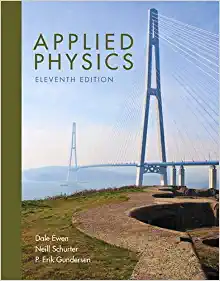Part A Learning Goal: To understand the concept sistance; to understand the processes in one-loop circuits; to The next several questions refer to the four diagrams on the left in (Figure 2) shown here labeled A. B. C, and D. In order for the current in a conductor to exist continuously, the conductor must be part of a loop, that is, a closed path through which the charged particles can move without creating a "build-up." Such build-up, if it occurs, creates its own electric field that cancels out the ex ultimately causing the current to stop. Part B However, having a loop, or a closed circuit, is not enough to maintain the current; there must also be a source of energy. Its recessity is fairly obvious: As charged particles move along the circuit, they lose potential energy. In fact, electrostatic forces always push the particles in the direction that leads to a decrease in potential energy. At some point, each charged particle Part C would reach the location in the circuit where it has the lowest possible potential energy. How can such a particle move toward a point where it would have a higher potential energy? Such a move requires that nonele ctrostatic forces act upon the charged particle, pushing it toward higher potential energy Part D despite the presence of electrostatic forces. In circuits, such forces exist inside a device commonly known as a battery. In a circuit, the battery serves as the energy source that keeps the charged particles in continuous motion by increasing their potential energy through the action of some kind of nonelectrostatic force. In which diagram or diagrams does the ammeter correctly measure the current through the resistor with resistance R? The amount of work that the battery does on each coulomb of charge that it "pushes through" is called (inappropriately) the Select the letter (s) corresponding to the correct diagram(s). electromotive force (pronounced "ee-em-ef and abbreviated emf or denoted by &). Batteries are often referred to as sources of emi (rather than sources of energy, even though they are, fundamentally, sources of energy). The emf of a battery can be View Available Hint(s) calculated using the definition mentioned above: & = W /q. The units of emf are joules per coulomb, that is, volts. The terminals of a battery are often labeled + and - for "higher potential" and "lower potential," respectively. The potential difference between the terminals is called the terminal voltage of the battery. If no current is running through a battery, the terminal voltage is equal to the emf of the battery: A Vbat = E. O B However, if there is a current in the circuit, the terminal voltage is less than the emf because the battery has its own internal OC resistance (usually labeled r). When charge q passes through the battery, the battery does the amount of work &q on the charge; however, the charge also "loses" the amount of energy equal to Ir ( I is the current through the circuit); therefore, OD the increase in potential energy is Eq - qir, and the terminal voltage is AVbut = E - IT. Submit In order to answer the questions that follow, you should first review the meaning of the symbols describing various elements of the circuit, including the ammeter and the voltmeter; you should also know the way the ammeter and the voltmeter must be connected to the rest of the circuit in order to function properly. Part E Complete previous part(s) Note that the internal resistance is usually indicated as a separate resistor drawn next to the "battery" symbol. It is important to keep in mind that this resistor with resistance r is actually inside the battery. Part F Complete previous part(s) In all diagrams, & stands for emi, r for the internal resistance of the battery, and R for the resistance of the external circuit. As usual, we'l assume that the connecting wires have negligible resistance. We will also assume that both the ammeter and the voltmeter are ideal: That is, the ammeter has negligible resistance, and the voltmeter has a very large resistance. Part G Complete previous part(s) Part H Complete previous part(s) Part I Complete previous part(s)








